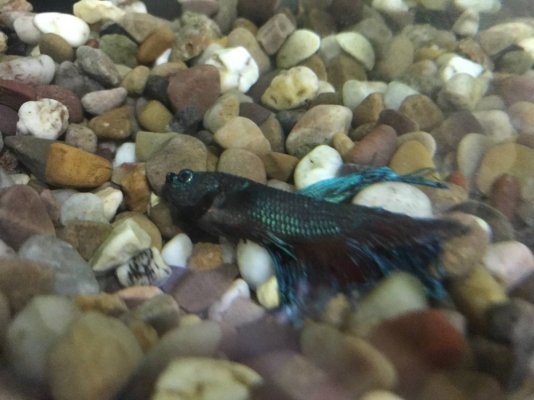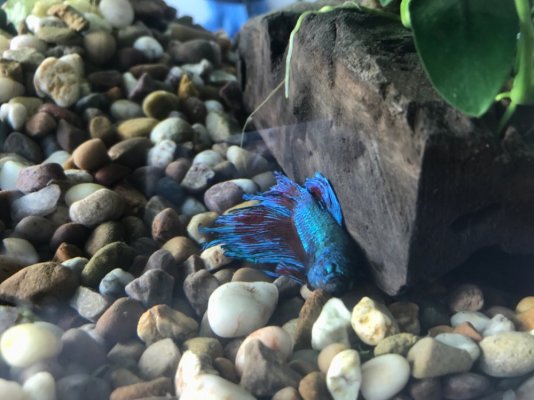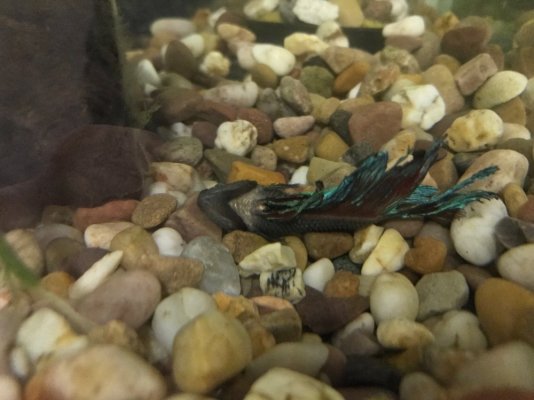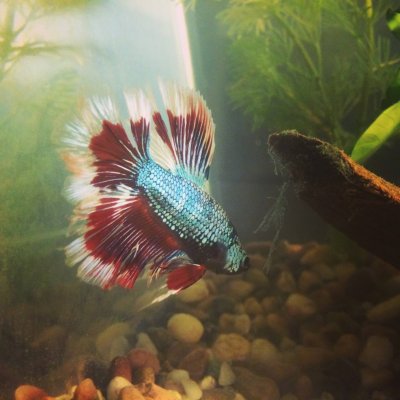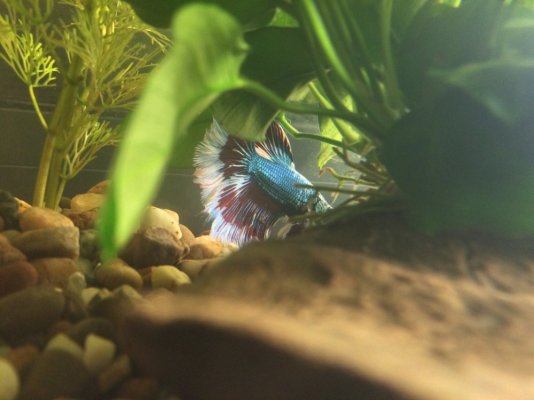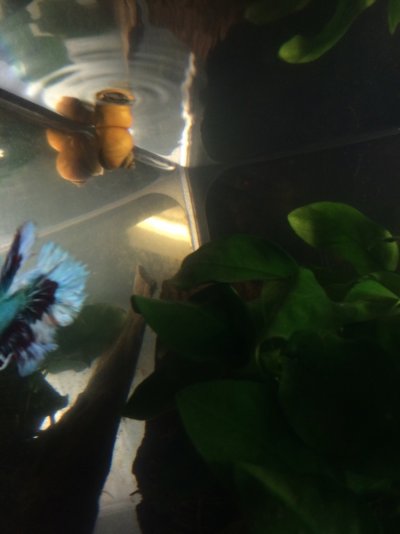Hello.
My betta fish has been lethargic and refusing to eat for around three weeks. He is lying on the gravel most of the time. He would occasionally spring up but slowly swims down to the ground. He looks like he is falling when he swims down.
I see obvious fin rot. He doesn't do anything but moving his gills lightly. Under the gills, the colour has changed from green-blue to gold. It looks rusty. Around his eyes and mouth also looks rusty.
I've been following 10-day-routine, which was told by an aquarist.
1. Remove the carbon filter. (The white one)
2. Days 1, 2, 3 and 6 - 1.5 ml of Protozin.
3. Days 4, 5, 6, 7, 8, 9, 10 - 2ml of Melafix.
4. On the Day 10, do 25-50% water change, insert the carbon filter back and leave it up until Day 11. Take out the filter and restart from Day 1.
It has been 13 days but the fish is still lethargic. He rarely moves his eyes around.
I would appreciate it if any of you could give me some advice.
Below are my aquarium info:
The water tank is Fluval Chi 2 (19l).
There are two plants.
There is a 25w heater.
The temperature is always between 25-26C.
I do water test every day and the nitrate level is always a little high. The result sometimes shows O.K. but sometimes slightly higher.
My betta fish has been lethargic and refusing to eat for around three weeks. He is lying on the gravel most of the time. He would occasionally spring up but slowly swims down to the ground. He looks like he is falling when he swims down.
I see obvious fin rot. He doesn't do anything but moving his gills lightly. Under the gills, the colour has changed from green-blue to gold. It looks rusty. Around his eyes and mouth also looks rusty.
I've been following 10-day-routine, which was told by an aquarist.
1. Remove the carbon filter. (The white one)
2. Days 1, 2, 3 and 6 - 1.5 ml of Protozin.
3. Days 4, 5, 6, 7, 8, 9, 10 - 2ml of Melafix.
4. On the Day 10, do 25-50% water change, insert the carbon filter back and leave it up until Day 11. Take out the filter and restart from Day 1.
It has been 13 days but the fish is still lethargic. He rarely moves his eyes around.
I would appreciate it if any of you could give me some advice.
Below are my aquarium info:
The water tank is Fluval Chi 2 (19l).
There are two plants.
There is a 25w heater.
The temperature is always between 25-26C.
I do water test every day and the nitrate level is always a little high. The result sometimes shows O.K. but sometimes slightly higher.

